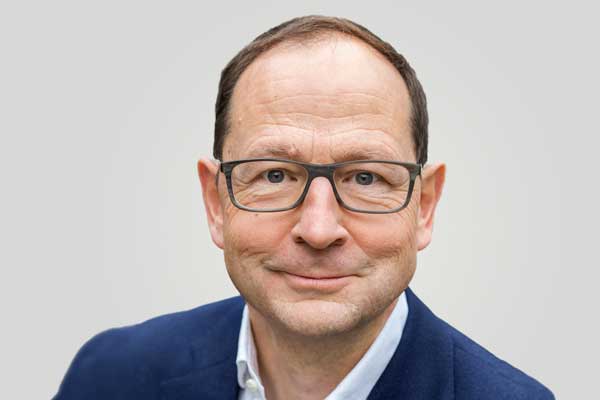CO2 emissions are a risk for real estate values
Mr Bode, agradblue advises real estate companies that want to sustainably reduce the energy consumption and CO2 emissions of properties and entire portfolios. How can the industry become a major CO2 reducer?
There are two central adjusting screws that can be turned: energy consumption and energy supply. The aim is to reduce energy consumption in the operation of the portfolio. The vast majority of properties in Germany are existing buildings. This is precisely where the German Sustainable Building Council (DGNB) comes in with its certification system for buildings in operation. The system shows a path to optimise real estate in such a way that the operators/owners exploit the potential for CO2 reduction in the most economical way.
And the second adjusting screw?
That is the energy supply of the buildings from renewable sources. For example, via heat pumps and with green electricity. But not every green electricity tariff is truly sustainable. Here it is important to look at reliable labels for green electricity products and rankings of electricity suppliers.
Have the climate protection debate and new legal framework conditions such as the EU Taxonomy Regulation, which introduces a sustainability classification of economic activities, forced the industry to rethink?
We can definitely assume that the regulatory pressure with regard to climate protection is increasing. Apart from that, the real estate industry per se is very risk-averse. Most real estate investors have recognised CO2 emissions as a source of risk for their property values. Their willingness to invest in decarbonisation measures in order to reduce the CO2 emissions of their properties according to predefined target corridors has therefore increased.
The EU taxonomy has also brought the measurability of sustainability into focus. However, the data situation regarding emissions or consumption is still rather poor in the real estate industry. How can this be changed?
Without a solid data basis, you neither know where you stand nor where something can be improved. For this reason, we advise our clients to invest money in a project to systematically record their inventory and, above all, to install digital consumption measurement, so-called smart metering.
Ralf F. Bode is Managing Director of agradblue GmBH and atmosgrad GmbH. As a senior auditor of the German Sustainable Building Council (DGNB), he is a member of the DGNB's technical committee and real estate advisory board. He advises on ESG topics and is active in the AHO Commission on Sustainability, Innovation and Climate Protection.
How do you proceed with the initial assessment of building portfolios?
We carry out a portfolio screening to locate each individual asset on the "CO2 map". Before this, data quality assurance is usually necessary. We check the data consistency of the properties in order to assess the consumption efficiency and optimise it in the long term. In the process, the consumption data is checked for completeness and plausibility. It is even better if the consumption data can already be supplied continuously and ideally in real time via the so-called smart metering. Only then is it possible to report on properties on the basis of reliable consumption data.
What role do certification systems like DGNB play in reducing the CO2 footprint?
Since 2007, the German Sustainable Building Council (DGNB) has been actively promoting climate protection that goes beyond what is required by law.
In addition, the DGNB provides a framework that presents procedures and strategies for climate neutrality. Among other things, it describes rules for balancing the CO2 emissions of buildings and individual climate protection roadmaps. However, the DGNB certification systems do not only focus on the reduction of CO2 emissions. Economic quality as well as socio-cultural and functional quality receive equal attention. The DGNB thus pursues a more holistic approach to sustainability.
As part of your consulting, you are increasingly taking into account new, digital solutions such as the predictive building control MeteoViva Climate.
Why do you think this solution is a sensible decarbonisation measure?
MeteoViva Climate enables an increase in energy efficiency via a relatively small module that can be installed with little effort and pays for itself after a short time. In addition, the solution comes with the sensors we need to measure the optimisation.
Further information
www.agradblue.com
www.atmosgrad.com
Presse release: MeteoViva Climate is the first DGNB-recognised service
